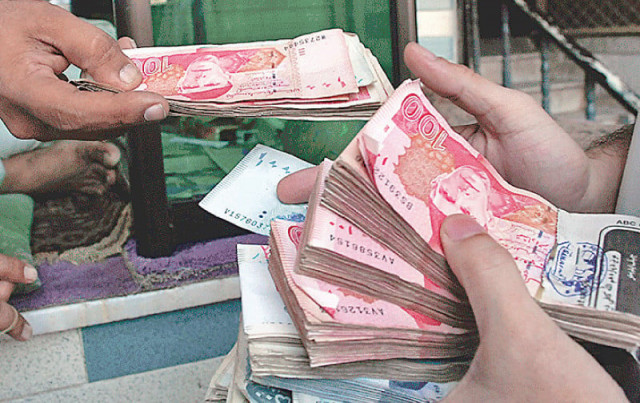Decade-high C/A surplus posted
Surge in remittances, decline in imports drive surplus to $729m in November

Following a substantial policy rate cut, Pakistan recorded its highest current account surplus in over a decade, reaching $729 million in November 2024. This positive development was primarily driven by a surge in remittances from overseas Pakistanis, while a significant reduction in the trade deficit further contributed to the surplus.
"November 2024 current account surplus stood at $729 million, marking a 15-year high and a 111% month-on-month (MoM) increase," stated Shankar Talreja, Director of Research at Topline Securities. "This brought the cumulative current account surplus for the first five months of FY2025 (5MFY25) to $944 million, compared to a deficit of $1.67 billion in 5MFY24."
The notable improvement in November's surplus is attributed to a 14% MoM decline in the trade deficit and a 43% MoM drop in the services deficit. Additionally, the primary deficit fell by 7% MoM, reflecting broader economic stabilisation.
Speaking to The Express Tribune, Sana Tawfik, Head of Research at Arif Habib Limited (AHL), highlighted that the $729 million surplus is the largest monthly surplus since February 2015 and the second-largest since July 2013. "The recovery was primarily driven by a sharp increase in remittances, which surged 29% year-on-year (YoY) to $2.9 billion in November 2024," she said. The majority of these inflows came from Saudi Arabia (up 34%), the UAE (up 50%), and the UK (up 20%).
On a five-month basis, remittances grew by 34% YoY, underscoring their vital role in stabilising the country's external accounts. "While remittances provided strong support, exports also posted moderate growth," she added. Exports of goods increased by 7% YoY, while exports of services registered an 8% YoY rise in November.
Despite an uptick in imports, the trade deficit narrowed sharply by 24% YoY in November, primarily due to a 9% decline in goods imports. This reduction was influenced by multiple factors, including a 2% MoM decline in machinery imports, a 4% MoM drop in food importspartly driven by falling global palm oil pricesand a substantial 29% decline in petroleum imports. The fall in petroleum imports was linked to lower international oil prices, with the average price of Arab Light crude dropping from $76.34 per barrel in October to $74.85 per barrel in November, reflecting a 2% decline.
On a cumulative five-month basis, the trade deficit stood at $10.8 billion, marking a 7% YoY increase. This highlights the ongoing challenges posed by rising imports, despite recent monthly improvements.
Foreign Direct Investment (FDI) also showed encouraging signs of growth. Pakistan recorded net FDI inflows of $219 million in November 2024, compared to $133 million in October. Cumulatively, during the first five months of FY25, net FDI inflows increased by 31% YoY to $1.1 billion, compared to $856 million during the corresponding period of FY24.
The State Bank of Pakistan (SBP) recently reduced the policy rate by 200 basis points to 13%, marking the fifth consecutive rate cut in the ongoing easing cycle, with a cumulative reduction of 900 basis points in 2024. The SBP cited a sharp decline in headline inflation to 4.9% in November and improving economic growth prospects as key factors behind its decision.
Shankar Talreja further noted that the improved trade balance, driven by a 10% decline in goods imports and a 13% decline in services imports, is a key factor supporting the current account surplus. During the post-monetary policy briefing on December 16, 2024, the SBP agovernor reiterated that Pakistan was on track to post a significant current account surplus for November. "We now expect the current account to settle at the lower bound of our previously projected range of 0-1% of GDP, given the better-than-expected trade balance," said Talreja.
The Balance of Payments (BOP) data reflects notable improvements in Pakistan's external accounts. The current account deficit, which stood at $3.3 billion in FY23 (July-June), has narrowed substantially to $1.7 billion in the first five months of FY24 (July-November). By November FY25, the current account had recorded a cumulative surplus of $944 million, signalling a significant turnaround.
This positive momentum can be attributed to a combination of factors, including a steady rise in remittances, reduced imports, and modest improvements in exports.
In terms of trade performance, goods exports have shown moderate growth, increasing from $27.8 billion in FY23 to $13.3 billion by November FY25. Meanwhile, goods imports have declined sharply, falling from $52.7 billion in FY23 to $23 billion during the same period. This notable reduction in imports has been a critical driver behind the improved trade balance, with the goods deficit narrowing from $24.8 billion in FY23 to $9.7 billion by November FY25.
The services sector has also contributed positively to the current account position. Exports of services improved gradually, rising to $3.3 billion in July-November FY24, while imports of services remained relatively stable. This has kept the trade deficit in services manageable, despite a slight shortfall. Overall, Pakistan's external account indicators reflect a positive outlook, driven by robust remittance inflows, improved trade balance numbers, and encouraging FDI growth. While challenges such as rising imports persist, the country's progress toward economic stabilisation is evident, signaling a path toward sustainable external account management.


















COMMENTS
Comments are moderated and generally will be posted if they are on-topic and not abusive.
For more information, please see our Comments FAQ